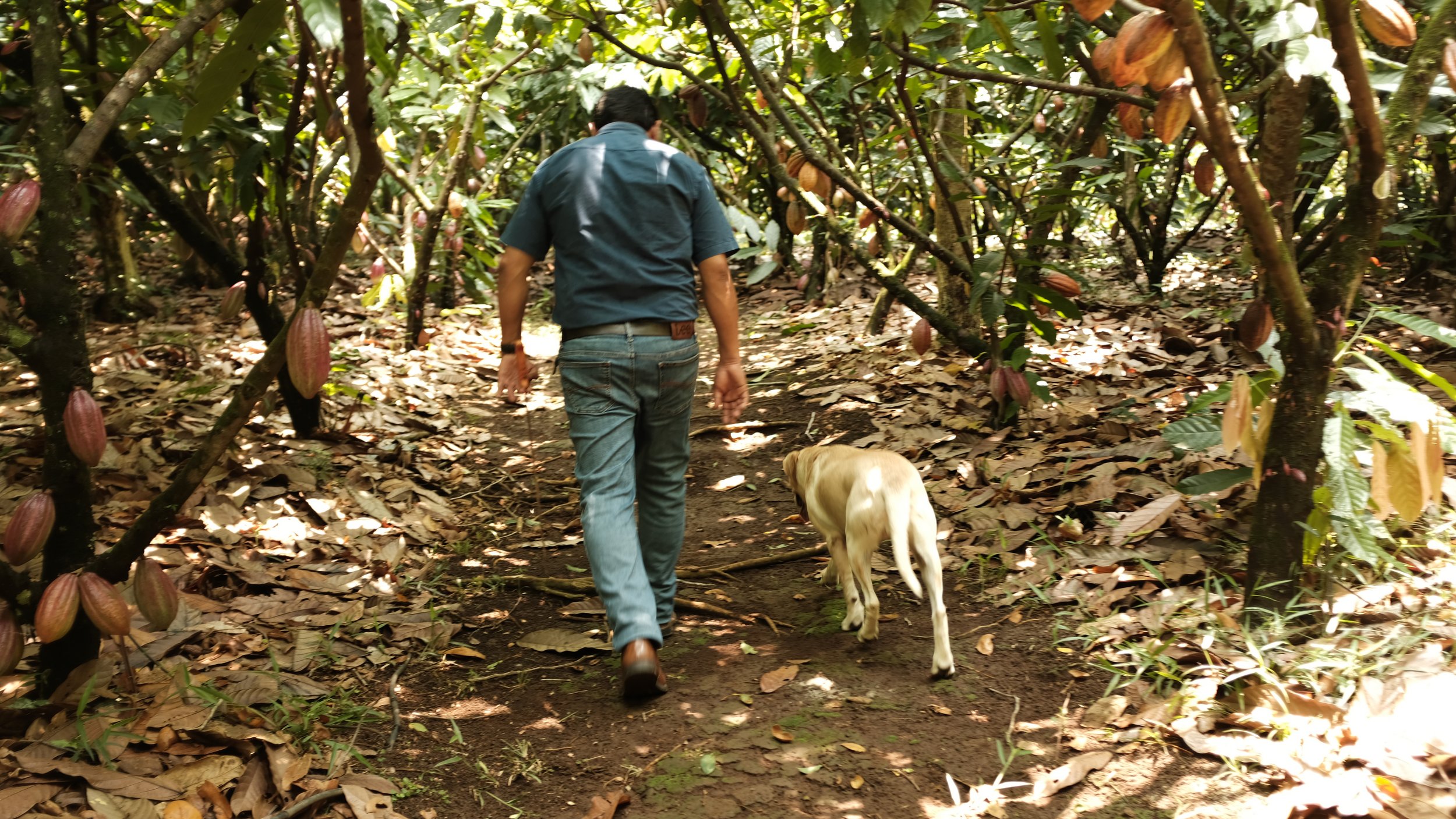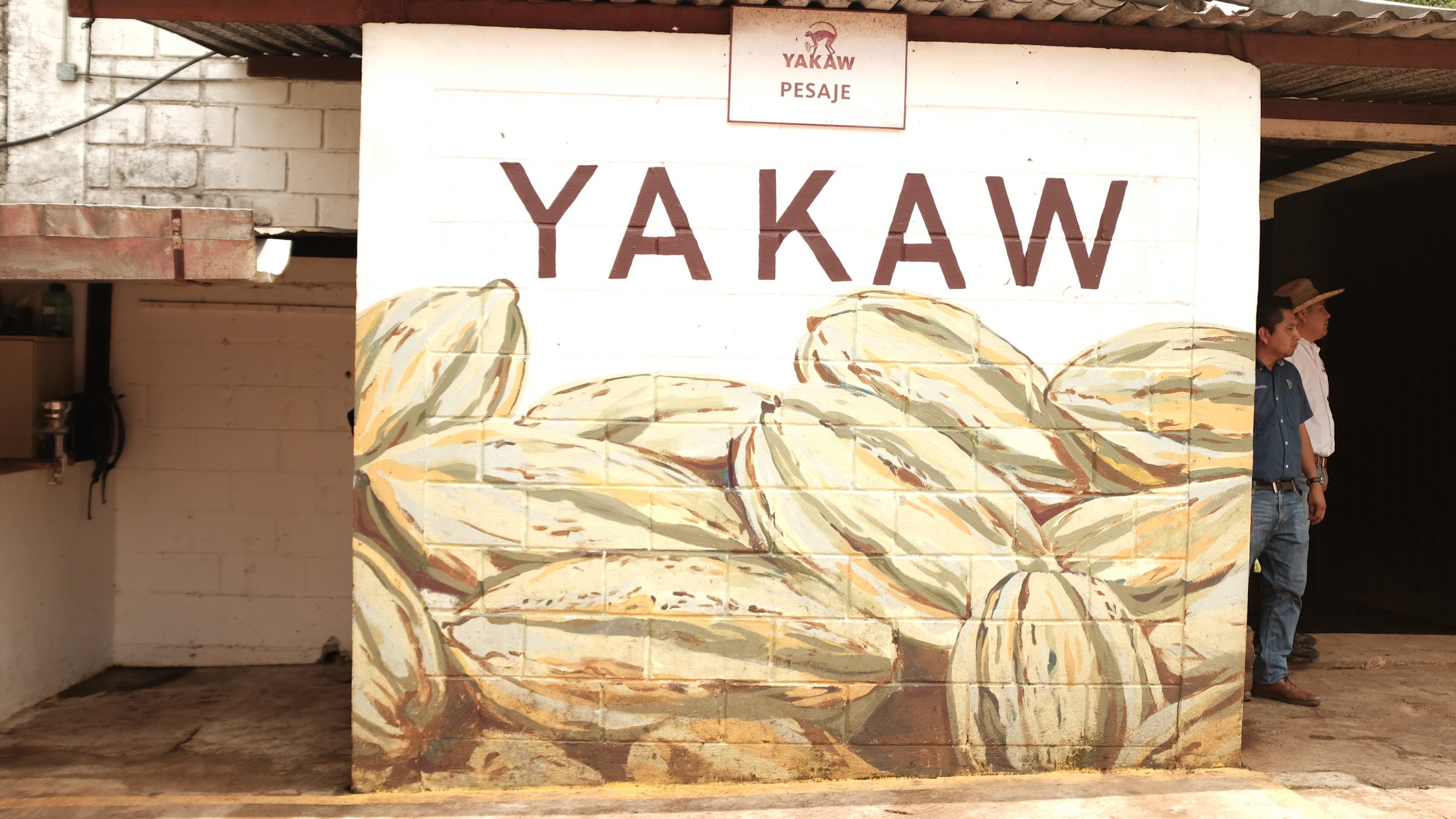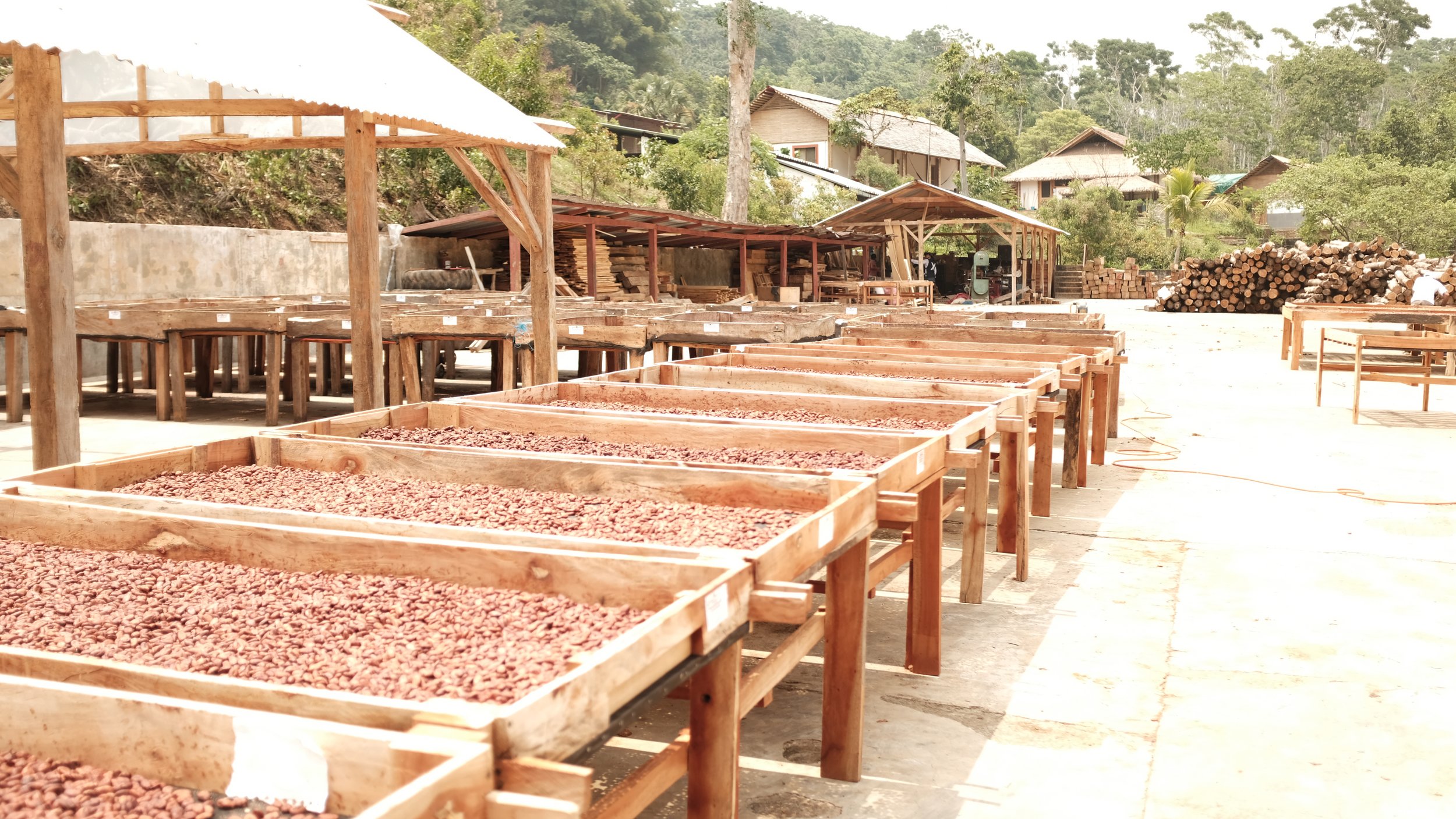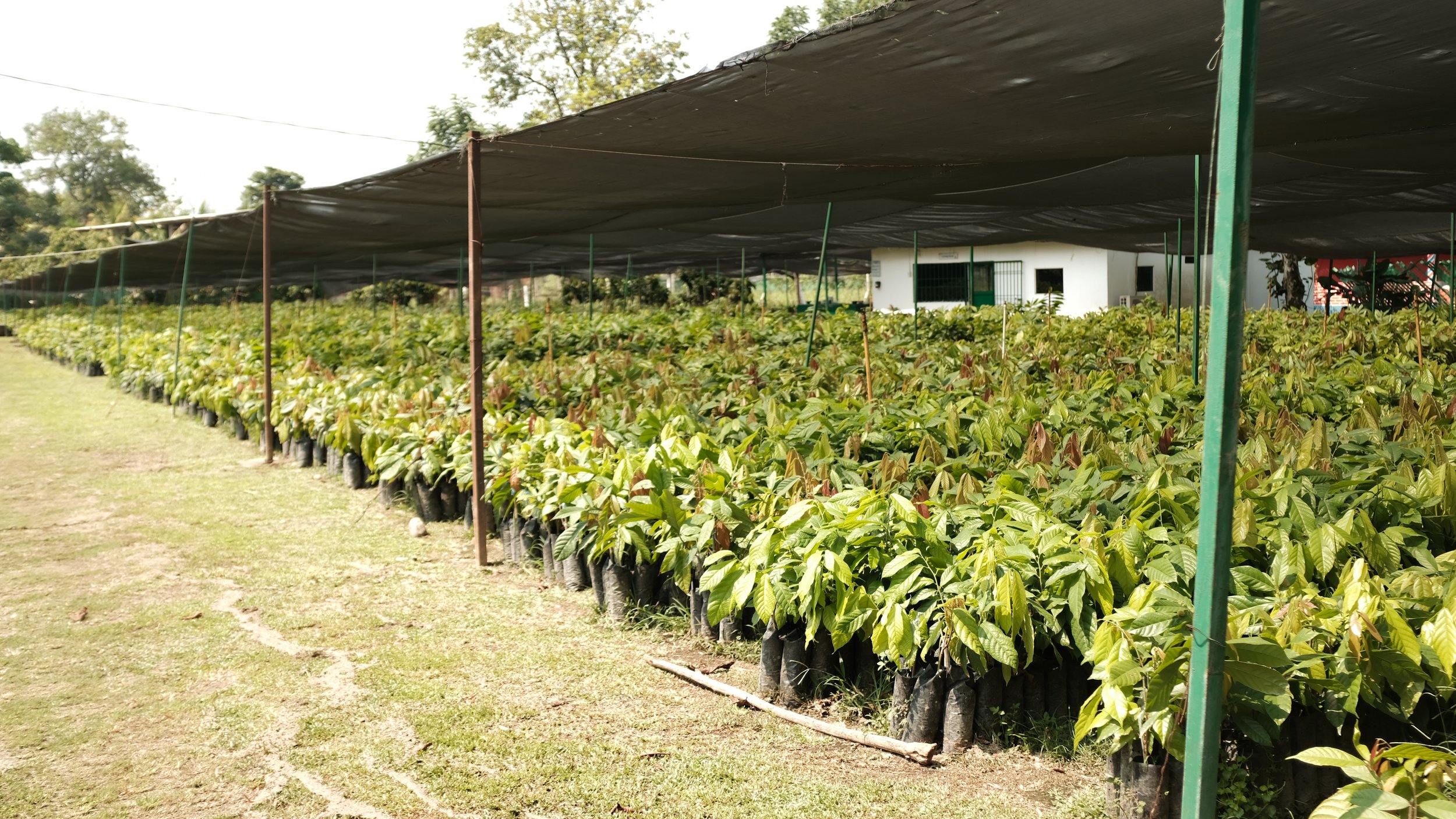Cacao Forests of Mexico
Cacao pods, Jardín Clonal Badenia, Chiapas
During my time in Chiapas, I was given the amazing opportunity to visit a collection of cacao farms and facilities. Of course, I accepted this generous offer with an eager smile and began planning…
I was picked up by Juan, the Head of Sustainability and Specialty Cacao in Mexico. A hefty job, indeed. He is actually from Peru, a magical country to grow cacao. It was wonderful to chat with him and learn more about chocolate, especially since I specialize in coffee.
Baby cacao pod, Jardín Clonal Badenia, Chiapas
Chocolate was first truly grown in Mexico, and soon the pods were shipped all over the world. Today, sadly, Mexico’s production has plummeted due to lack of support and diseased trees. Peru, Ecuador, and West Africa now dominate the cacao market. Now, thanks to the work of Juan and his team, they are revamping the cacao industry in Mexico, and working to make it a specialty-producing country.
When we think of chocolate, we often think of Hershey’s and Mars - both of which produce decent chocolate, but add plenty of sugar and other ingredients. However, they are important funders for projects such as the preservation of cacao in Mexico.
The chocolate world is complex, almost as complex as the coffee world, and I love it already.
Jardín Clonal Badenia, Chiapas
We arrive at the Jardín Clonal Badenia, essentially a massive research garden to understand how different varietals of cacao react in different environments. There are 17 varietals here, including the white cacao (Criollo) which is of the best quality. A table is prepared for me to see how each of the cacao pods look inside, and we taste each one. This was such a new and exciting experience for me. Each pod was offered to me, and I carefully removed one of the slimy white seeds and placed it into my mouth. Immediately, a creamy, sweet, citrusy goodness flooded my taste buds. It was unlike anything I had ever tasted.
Cacao display, Jardín Clonal Badenia, Chiapas
After the introduction, an agronomist named Lino gave me a tour of the garden. It felt like I was in a Willy Wonka wonderland - these trees sprout flowers on their limbs, and soon the delicate flowers produce the fruit that would become the cacao pods. It was astonishing to see the pods sticking out of the branches. I could not believe nature had the ability to grow something this odd way. And I wondered who first decided to open this alien-looking pod to eventually extract the seeds, roast them, and create chocolate.
Lino the agronomist at Jardín Clonal Badenia, Chiapas
The garden was also used to understand how the trees would react to the disease that decimated the crop decades ago. Thanks to the work here, they understand which varietals will be best to plant, and which varietals have the best resistance to disease.
Cacao blossoms, Jardín Clonal Badenia, Chiapas
Some interesting facts: the flower needs to be pollinated, and only opens for a few hours. After pollination, it takes 5 months to fully produce the pod. Grafts, or leaf sections, are taken from the healthy trees here and transported to the nursery to successfully grow hybrids.
Whew! What a trip…I was vibrating with excitement and could not believe this intricate world I stepped into.
Don Jorge Estate, Chiapas
Juan, Lino, and I then headed down the road to the Don Jorge Estate. This was a huge and vast Estate of 150 hectares of only the elite white cacao varietal, all for one client in Japan, with the name of Yakaw as their brand. An extremely rare cacao farm for Mexico, which is primarily comprised of smallholders.
River at Don Jorge Estate, Chiapas
We drive around the Estate, and I see the river where they pump water for the endless hectares of trees. Cacao trees are always thirsty! Thus, most farms have irrigation and desperately need it. Especially in the warm/dry climate of Chiapas.
White cacao trees with cidra trees at Don Jorge Estate, Chiapas
The air is HOT and the sun bright. The truck stops at a processing area, where I am given a tour, ignoring the puddles of sweat accumulating in my clothes.
Sorting cacao pods, Don Jorge Estate, Chiapas
A lovely young woman named Ana talks us through the processing of the cacao. First, the pods are brought to the area, and carefully broken open by banging the side. The inside is evaluated, and if it is in a healthy condition, the pod if given to another person who scoops the sticky seeds into a bucket. These seeds are then moved to boxes which are stored in a warm greenhouse to ferment for about 5 days. The smell…oh my…it is syrupy and rich, I could not stop inhaling. And the bees agreed…there were swarms everywhere. They were drunk on the sugars of the cacao.
Fermentation room, Don Jorge Estate, Chiapas
Next, the beans are dispersed on raised beds to dry in the sun for about 12-13 days. They are moved under shade when it rains (which thankfully will be today as I hear the distant roar of thunder). The dried beans are sent to the chocolatier in Japan to be further processed.
Drying tables, Don Jorge Estate, Chiapas
Ana then takes us to her lab, where we taste different variations of this luscious white cacao. So smooth, creamy, and with complex orange tasting notes - there was no milk added to this chocolate, and it was so creamy and beautiful.
Chocolate tasting, Don Jorge Estate, Chiapas
Thankfully, we did not melt in the sun, and the chocolate was a pleasant treat before lunch.
Employee cafeteria, Don Jorge Estate, Chiapas
Rains began to fall as we began our drive back to Tapachula. Thunder, lightning, ah so romantic. I spent the evening dreaming about chocolate…
Farm view, Don Jorge Estate, Chiapas
Juan picks me up the following morning, and we head to the main office in Tuzantán for the cacao team. I meet everyone and we soon see Lino again and he gives us a tour of the nursery, which is perfectly constructed behind the offices.
Lino with seedlings, Tuzantán nursery, Chiapas
He starts by showing us the grafting process. The cacao seeds are first removed from the pod, coated in a mulch material, then planted in soil. Once the plant grows to a certain height, the grafting is executed by carefully cutting a branch in a specific way, and inserting the graft from the other varietal. Plastic is wrapped around the branch, and it remains wrapped for some time before the plastic is removed. The tree will grow perfectly around the graft, and this creates the new varietal, resistant to disease but maintaining excellent quality. The trees then grow here for a couple more months before being transported to farms.
Cacao nursery, Tuzantán, Chiapas
Ah! Such a beautiful process, and Lino explained it perfectly with each stage described with an example tree. I was so impressed. We walked around the nursery, saw all the cacao trees growing in their small plastic tubs. Lino has worked here for 11 years, and his knowledge shows. I really loved learning from him.
Specialty cacao fermentation box, Tuzantán, Chiapas
After this, we are shown to the fermentation area, somewhat similar to the Estate the previous day. There are wooden boxes for the beans to ferment in, and separate small boxes for the specialty beans. Then there are tables for drying…
Cacao drying beds, Tuzantán, Chiapas
The smell, once again, is intoxicating, and I wished I could wrap myself in the scent forever. We also see a gas-powered drying table, where, when ignited, the cacao beans receive a flow of warm air from underneath to dry evenly and quickly.
Heated drying beds for cacao, Tuzantán, Chiapas
So intricate! Our last stop is the lab, where we have a tasting. I am once again entranced by this amazing chocolate. We tasted only the specialty chocolate, with no milk and little sugar. I could not believe the complexity of chocolate! A goodie bag is prepared for me…
Juan Jose Rojas at his cacao farm, Chiapas
The rest of the morning is a sort of rushed collection of farm visits of local producers who grow cacao and sell it to the organization. I meet Juan Jose Rojas, Maria Osorio Quevedo and María Agustín Marroquin and walk around their farms for about ten minutes each. It is so warm, mosquitos are frisky, but the cacao trees are glorious! I trudge through these three farms, each coated with thick leaves to help the soil, as I learn about how these producers grow cacao and their stories.
Maria Christina O'Sorio at her cacao farm, Chiapas
We return to the office, have a small lunch (a bag of lettuce for me…) and I am then transferred to someone who will drive me to Tuxtla.
Julio Agustin at his wife’s cacao farm, Chiapas
What an adventurous couple of days in the land of chocolate! I was so shocked each moment as I learned more and tasted, smelled, and enjoyed. A new appreciation for chocolate, indeed…






















